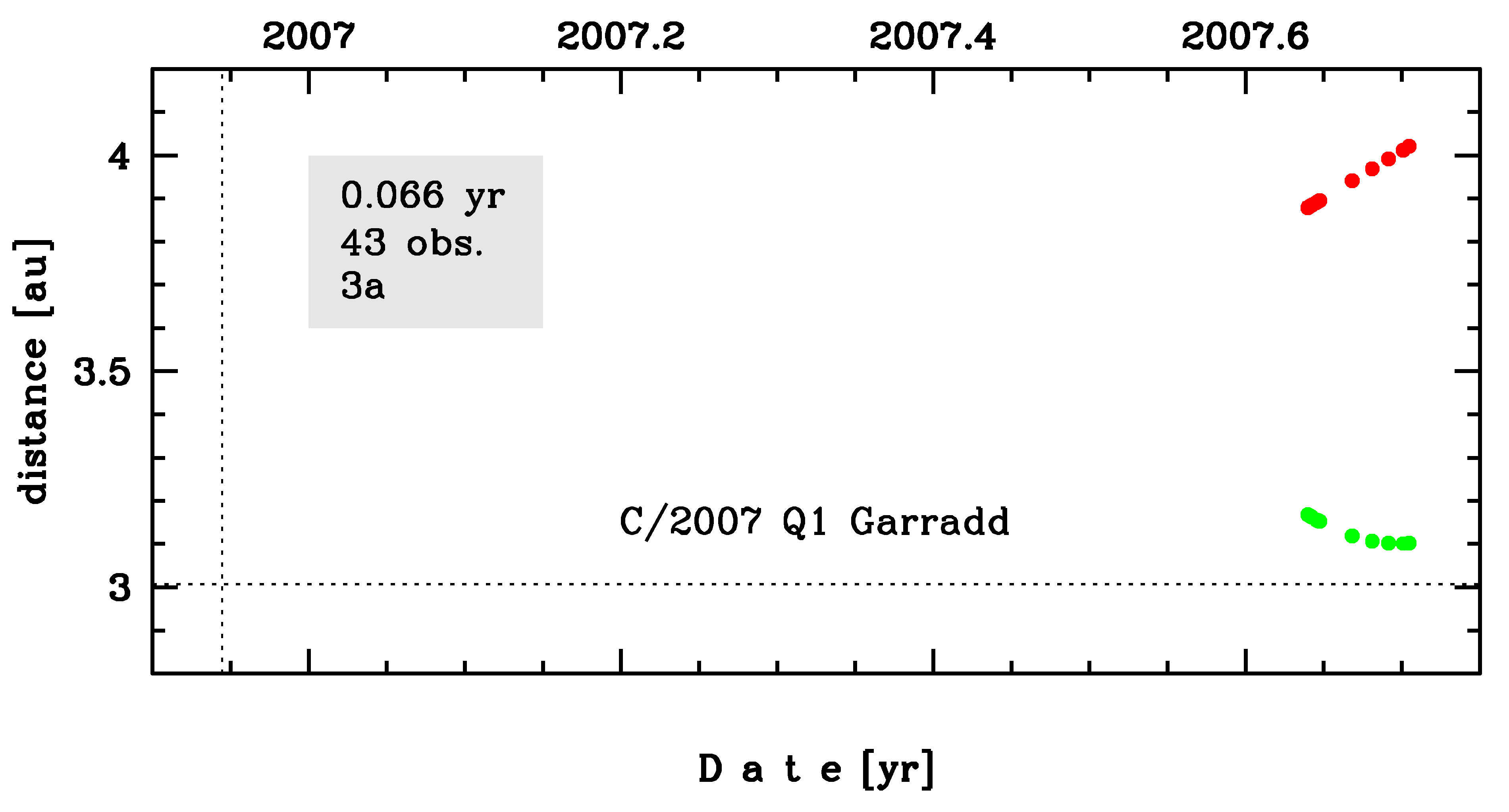C/2007 Q1 Garradd
more info
Comet C/2007 Q1 was discovered on 21 August 2007 by G. J. Garradd (Siding Spring Survey), that is about eight months after perihelion passage (q=3.017 au) and observed only about three weeks in the narrow range of heliocentric distance from 3.88 au to 4.02 au (very poor quality orbit).
Comet had its closest approach to the Earth on 11 September 2007 (3.093 au), about 3 weeks after its discovery and about 9 months after its perihelion passage.
This probably Oort spike comet suffers moderate planetary perturbations during its passage through the planetary system and these perturbations lead to escape the comet from the solar system on hyperbolic orbit (see future barycentric orbit).
See also Królikowska and Dybczyński 2013 and Królikowska 2020.
Comet had its closest approach to the Earth on 11 September 2007 (3.093 au), about 3 weeks after its discovery and about 9 months after its perihelion passage.
This probably Oort spike comet suffers moderate planetary perturbations during its passage through the planetary system and these perturbations lead to escape the comet from the solar system on hyperbolic orbit (see future barycentric orbit).
See also Królikowska and Dybczyński 2013 and Królikowska 2020.
| solution description | ||
|---|---|---|
| number of observations | 43 | |
| data interval | 2007 08 21 – 2007 09 14 | |
| data type | observed only after perihelion (POST) | |
| data arc selection | entire data set (STD) | |
| range of heliocentric distances | 3.88 au – 4.02au | |
| detectability of NG effects in the comet's motion | NG effects not determinable | |
| type of model of motion | GR - gravitational orbit | |
| data weighting | NO | |
| number of residuals | 84 | |
| RMS [arcseconds] | 0.58 | |
| orbit quality class | 3a | |
| orbital elements (heliocentric ecliptic J2000) | ||
|---|---|---|
| Epoch | 2006 12 11 | |
| perihelion date | 2006 12 11.84150604 | ± 0.75334299 |
| perihelion distance [au] | 3.00637873 | ± 0.02053678 |
| eccentricity | 1.00306045 | ± 0.00223242 |
| argument of perihelion [°] | 282.566809 | ± 0.525540 |
| ascending node [°] | 5.833680 | ± 0.066746 |
| inclination [°] | 82.22274 | ± 0.24352 |
| reciprocal semi-major axis [10-6 au-1] | -1,017.98 | ± 732.72 |
